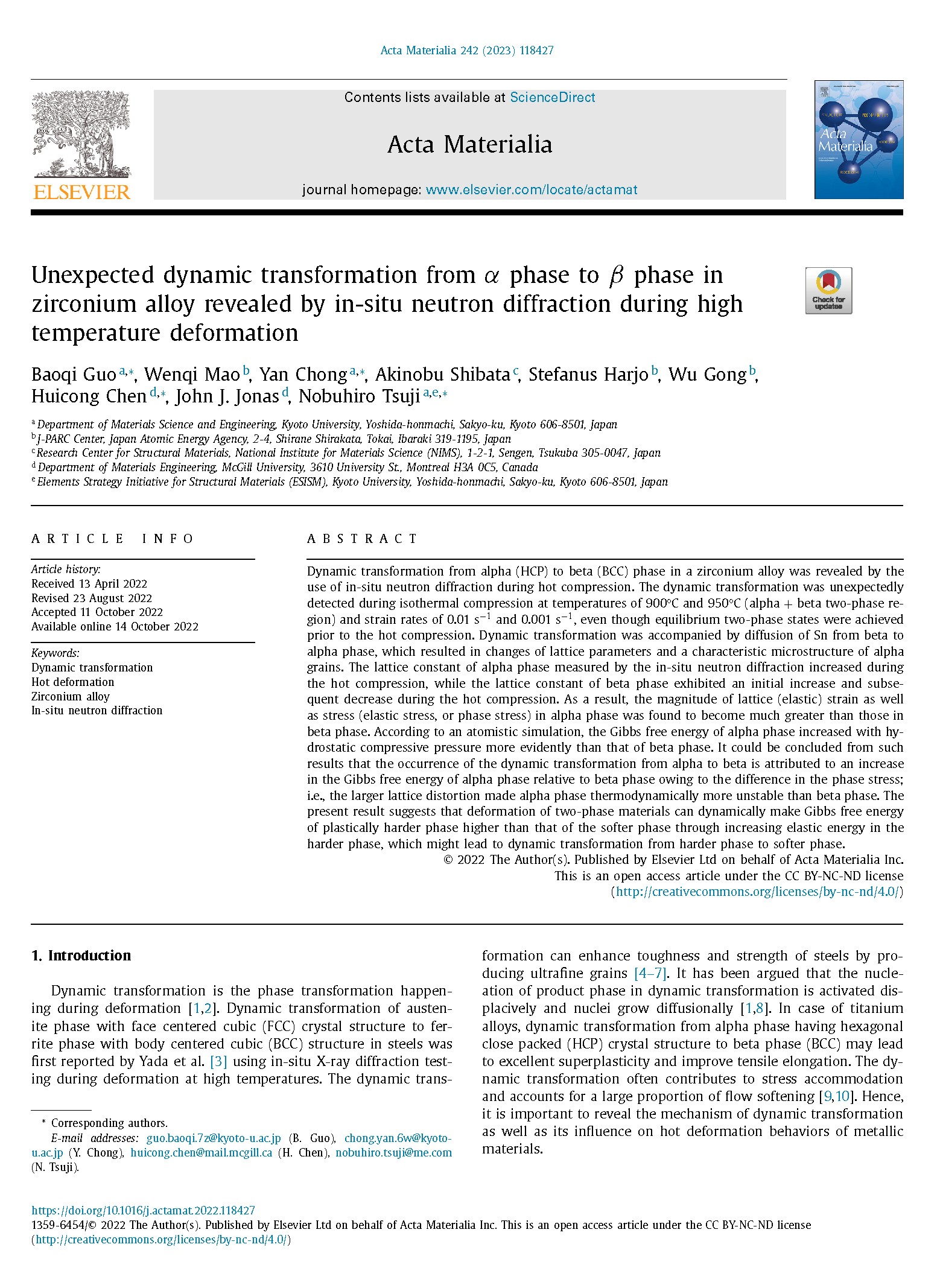Unexpected dynamic transformation from α phase to β phase in zirconium alloy revealed by in-situ neutron diffraction during high temperature deformation.
Acta Materialia, 242 (2022), No.118427研究論文概要
Dynamic transformation from alpha (HCP) to beta (BCC) phase in a zirconium alloy was revealed by the use of in-situ neutron diffraction during hot compression. The dynamic transformation was unexpectedly detected during isothermal compression at temperatures of 900°C and 950°C (alpha + beta two-phase region) and strain rates of 0.01 s−1 and 0.001 s−1, even though equilibrium two-phase states were achieved prior to the hot compression. Dynamic transformation was accompanied by diffusion of Sn from beta to alpha phase, which resulted in changes of lattice parameters and a characteristic microstructure of alpha grains. The lattice constant of alpha phase measured by the in-situ neutron diffraction increased during the hot compression, while the lattice constant of beta phase exhibited an initial increase and subsequent decrease during the hot compression. As a result, the magnitude of lattice (elastic) strain as well as stress (elastic stress, or phase stress) in alpha phase was found to become much greater than those in beta phase. According to an atomistic simulation, the Gibbs free energy of alpha phase increased with hydrostatic compressive pressure more evidently than that of beta phase. It could be concluded from such results that the occurrence of the dynamic transformation from alpha to beta is attributed to an increase in the Gibbs free energy of alpha phase relative to beta phase owing to the difference in the phase stress; i.e., the larger lattice distortion made alpha phase thermodynamically more unstable than beta phase. The present result suggests that deformation of two-phase materials can dynamically make Gibbs free energy of plastically harder phase higher than that of the softer phase through increasing elastic energy in the harder phase, which might lead to dynamic transformation from harder phase to softer phase.
